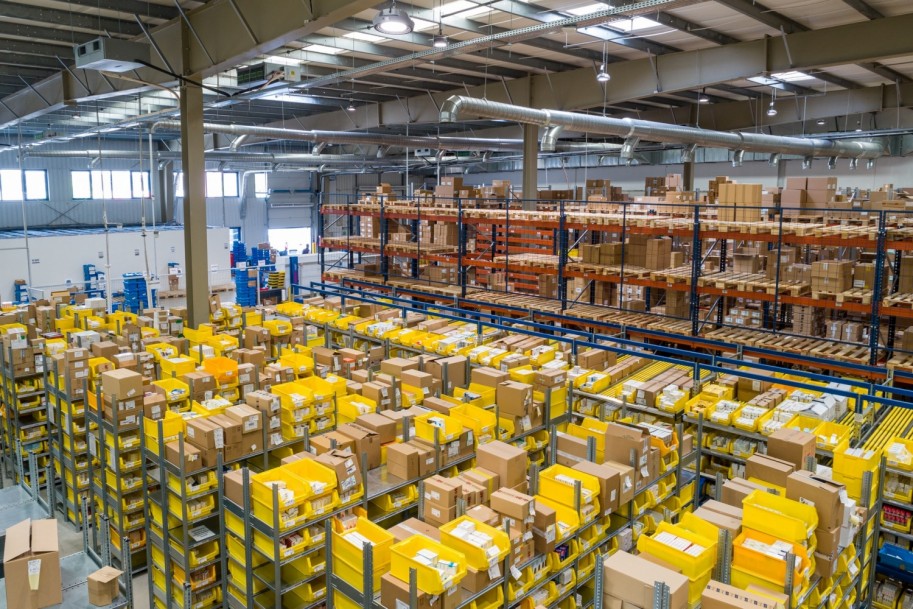
Fuel prices. Chip shortages. A lack of raw materials. Carelessness and mishandling. Theft. Bottlenecks. These and myriad other problems plague supply chain and logistics managers every day. That's not even considering keeping up with consumer demand, which was at an all-time high until quite recently. Then there is the day-to-day challenges facing managers regularly: temperature issues, potential shocks, lost cargo, impacts, and other problems. Any Logistics manager needs to be able to handle these and ensure cargo arrives at its destination safely. To do that, they need to find the right tools for the job. Today, we're talking about five different tools anyone can use to get the most out of their supply chain monitoring/management. Read on to learn more.
Temperature Monitors
Temperature monitors are amazing little devices. Although simple in design, they serve an integral function. They're also one of the most common tools managers use to monitor their shipment conditions accurately. Temperature sensors help operators keep an eye on the vital conditions of every shipment at each stage of the supply chain. So what are they and how do they work? A temperature monitor is a small device that can log time and temperature fluctuations. This provides managers with quick insight into any temperature related problems that occur along the supply chain. Keeping food, meat, pharmaceuticals, and other biomatter safe along the cold chain is a significant challenge, so having easy to use, worthwhile tools for the job can be a great help when it comes to keeping everything safe in your own cold supply chain.
Impact Indicators
Impact indicators are a useful monitoring device for any shipment size. Indicators measure shocks and impacts that occur during handling or transit. They're effective for identifying mishandling, poor transport conditions, and identifying potential damage before it can become an issue for the recipient/end-user. Adding impact indicator and monitoring devices to your supply chain management is a good idea. They can help determine if fragile items are being mishandled or dropped during shipment. Certain impact indicators are single-use and can fit snugly on the side of a piece of cargo. When you stop to Monitor and check the cargo, you can find out if it has been mishandled or damaged throughout the shipment (usually registering between 5G and 75G worth of force). Another reason to use an impact indicator/shock monitor is that they are tamper-proof and field armable. That means you can ensure the viability and safety of your shipments as they safely make their way to destinations across the world.
Vibration Sensors
Almost half of all products that get damaged in transit are damaged because of vibration-most often caused by bumpy roads, uneven surfaces, and poor packing. That's why vibration sensors make a great addition to your logistics monitoring toolbox. Vibration sensors are remarkably similar to impact indicators (even working in almost the same way). Instead of focusing on measuring impacts, however, their primary function is logging vibrations. Vibration loggers and sensors are ideal for monitoring your cargo as it travels around. Using them regularly allows companies to identify problem areas and take corrective action before any serious damage to the cargo can happen. They also help reduce freight costs and prevent unnecessary repairs or replacements due to vibration damage.
RFID Tags
RFID (or radio frequency identification tags) are essentially microchips. They're attached to packages, can be active or passive, and get monitored during transit. Everyone's used RFID tags at some point. Whether it's through library books, shopping, or working in logistics, RFID is a popular technology. Due to its small size and wireless capabilities, it's ideal for tracking and identifying objects/assets. They can be used in supply chain monitoring to keep things accurate and efficient. They're also useful in Inventory management because of this ability. RFID tags store data about any object's location, condition, and history. When it's read with a scanning device, managers can see what's happening almost in real-time with their cargo. This, in turn, improves Inventory management and efficiency. RFID tags can be active or passive-both of which can be useful depending on your shipping/monitoring needs.
Inventory Management Platforms
While they're not something you'd place physically on your cargo, an inventory management system is still an incredibly valuable tool for the supply chain management. With the changes in technology the 21st century has brought us, we no longer have to rely on antiquated methods of inventory management. Gone are the days of manila folders and large rooms of paper tracking inventory, warehouse stock, and transactions. Instead, the software makes everything run more smoothly. With good inventory software in play, you can keep track of supplies automatically, whether they're stored in your warehouse or being shipped/received. With inventory management software, managers can track stuff in real-time. This means they can have their fingers on the pulse of when to expect shipments, what's going out, and what might be required to meet demand. Such systems also offer location services, meaning you can track inventory precisely as it moves along supply routes. This becomes more useful as demand heats up and ultimately helps create a better logistics management system for the entire organization.
© 2017 Jobs & Hire All rights reserved. Do not reproduce without permission.
* This is a contributed article and this content does not necessarily represent the views of jobsnhire.com




